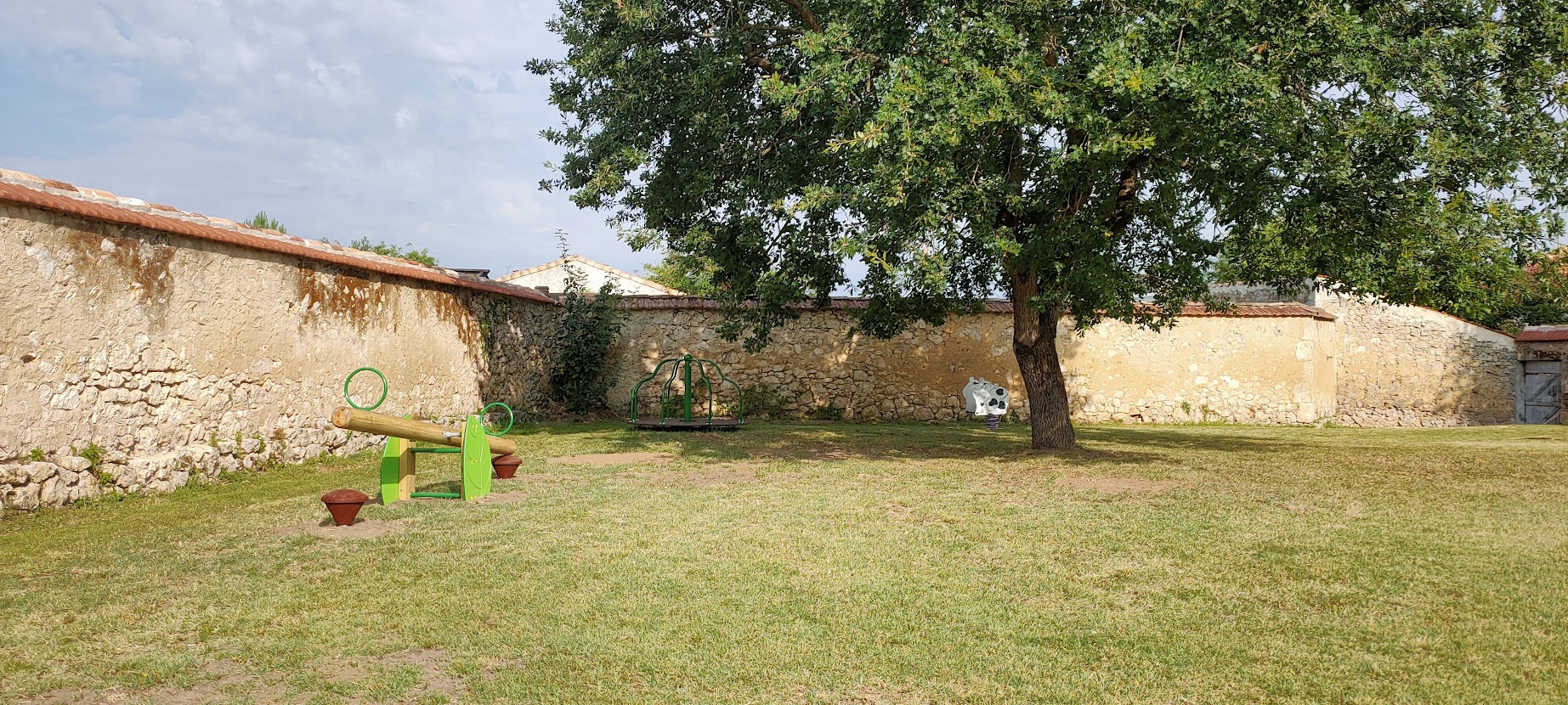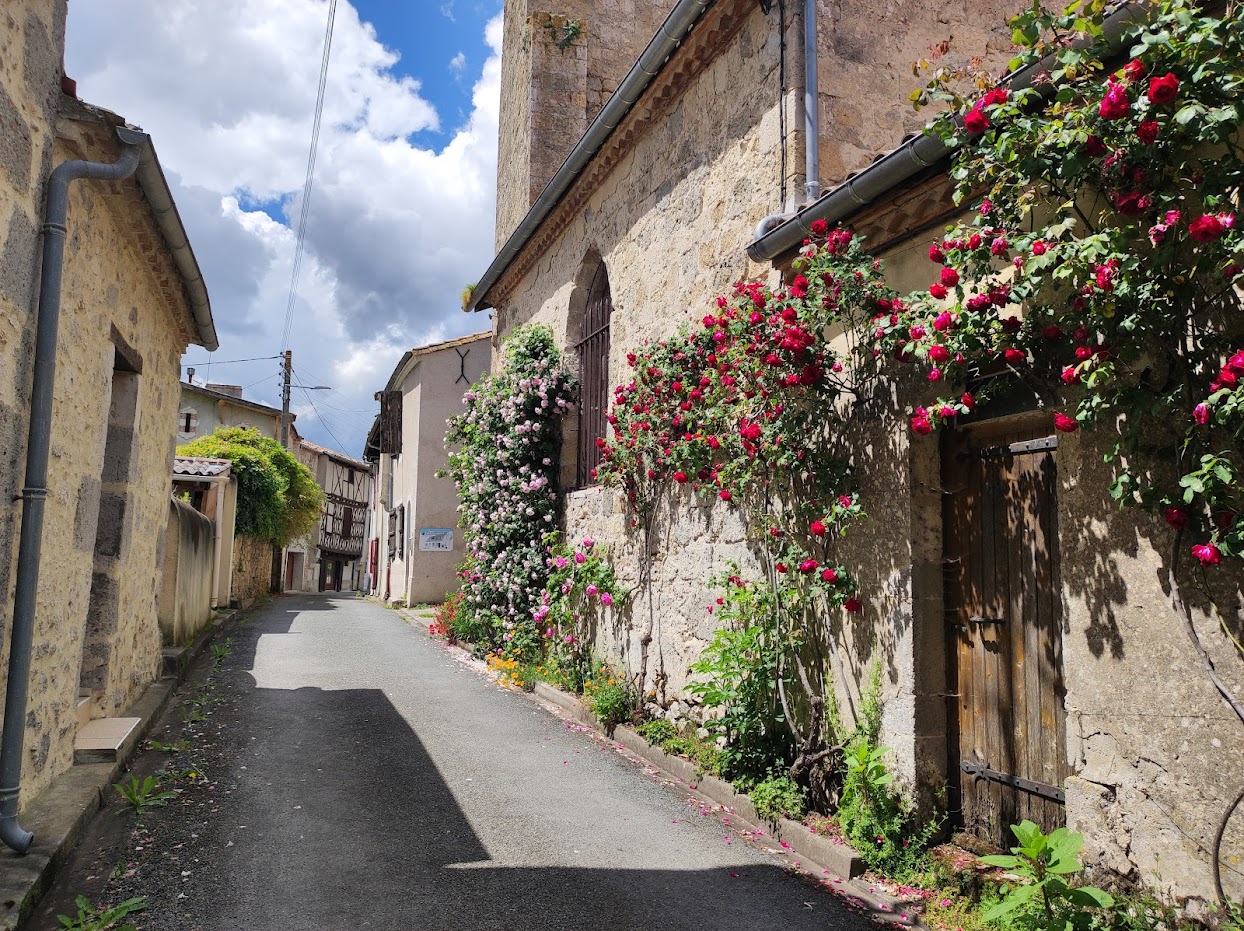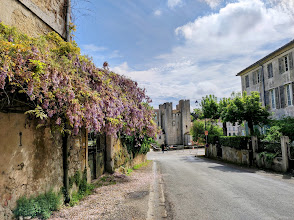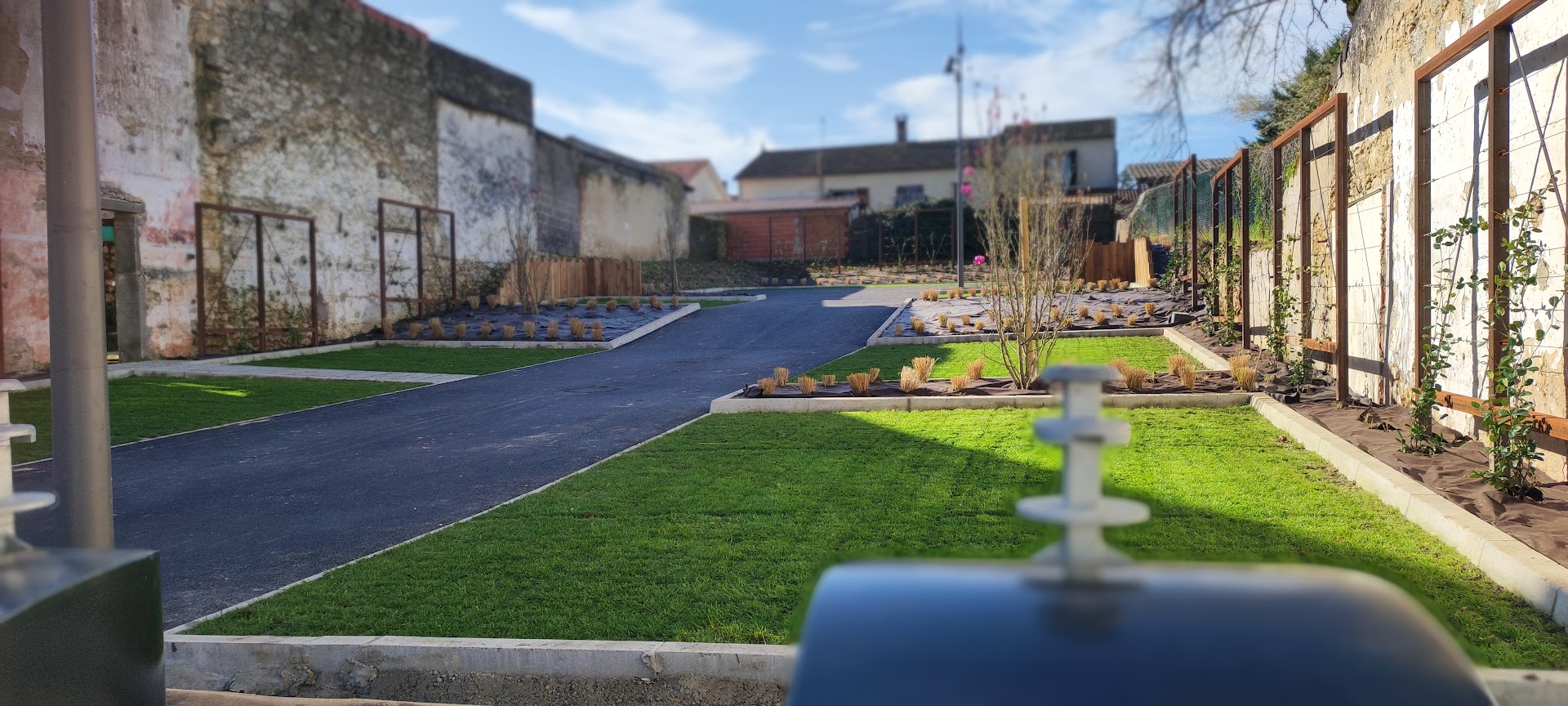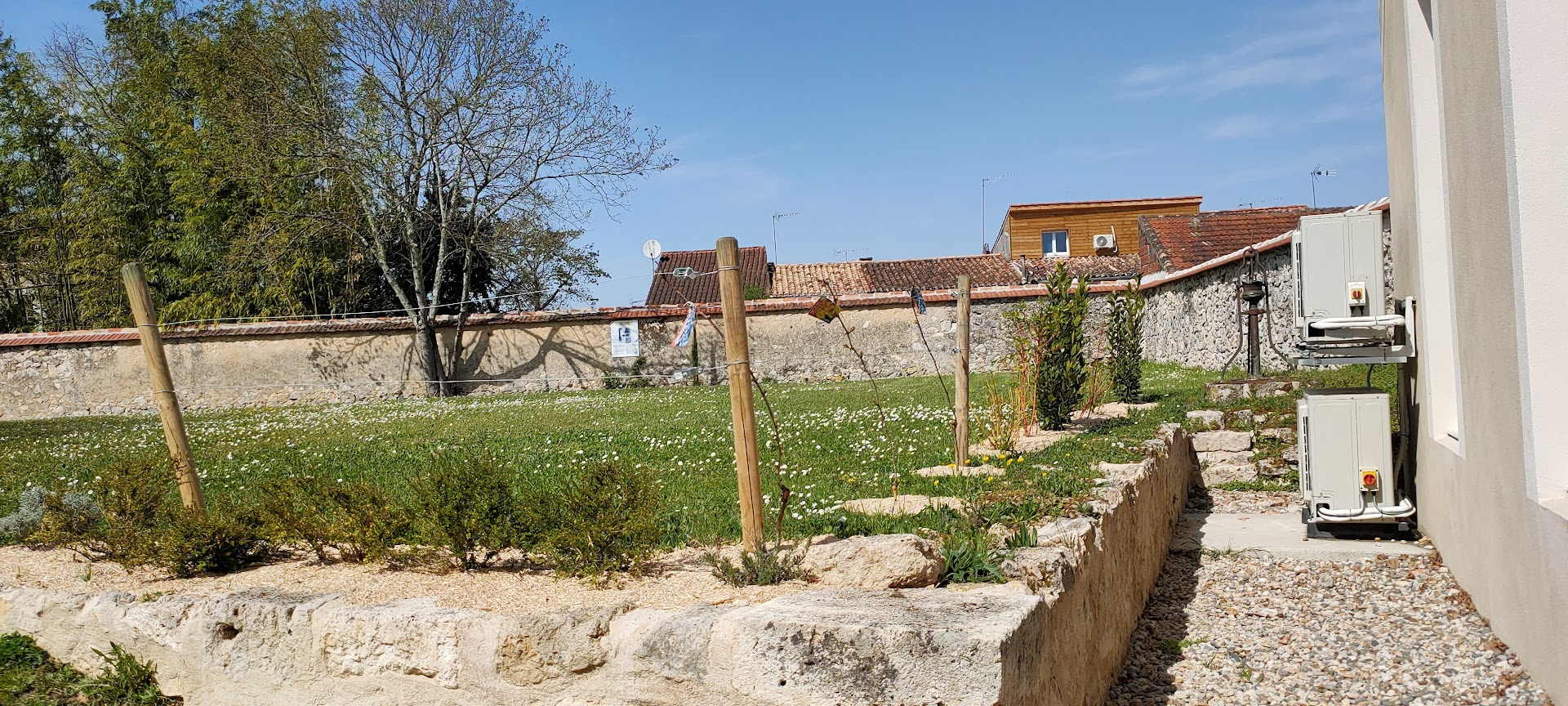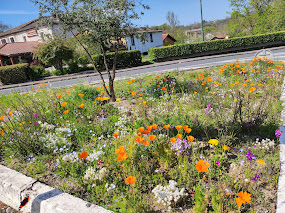: Greening the Facades
: Greening the Facades and the Town Center of Barbaste
Barbaste, a Village Greening Its Future!
At the heart of a territory made up of 70% forests, Barbaste is reinventing its town center! Greened facades, eco-friendly public spaces, and a participatory approach—our project tackles air pollution, urban heat islands, and showcases our rich heritage. From the Moulin des Tours to the Château Faulong, we combine sustainability, inclusion, and aesthetics to create a greener and more attractive living environment.
At the heart of a territory made up of 70% forests, Barbaste is reinventing its town center! Greened facades, eco-friendly public spaces, and a participatory approach—our project tackles air pollution, urban heat islands, and showcases our rich heritage. From the Moulin des Tours to the Château Faulong, we combine sustainability, inclusion, and aesthetics to create a greener and more attractive living environment.
France
Barbaste Bourg
47230 Barbaste
47230 Barbaste
Early initiative
Yes
Yes
Yes
No
No
47021: Barbaste (FR)
Located in the heart of a 70% forested area, Barbaste is committed to reinventing its town center by integrating sustainable and aesthetic urban greening solutions. This initiative aims to reduce air pollution, combat urban heat islands, and enhance the municipality’s architectural and natural heritage. The project directly supports Barbaste’s vision of obtaining the "Station Verte" (Green Resort) label, reinforcing its status as a sustainable tourism destination.
Target Groups
Residents and local communities: Improving quality of life, enhancing shared spaces, and strengthening social cohesion.
Young generations (Children’s Municipal Council & Schools): Active participation in urban greening, environmental awareness programs, and hands-on ecological projects.
Tourists and visitors: Creating an attractive, eco-friendly environment that aligns with the town’s cultural and outdoor tourism appeal.
Specific Objectives
Greening facades and urban spaces to reduce pollution and improve air quality.
Creating new ecological public spaces for community interaction.
Promoting biodiversity through native plant species and pollinator-friendly landscaping.
Fostering civic engagement through participatory planning with residents and school programs.
Enhancing tourism appeal by integrating sustainable urbanism into the town’s cultural and historical framework.
Expected Outcomes
Significant improvement in air quality and reduction of urban heat island effects.
Greater biodiversity and green coverage in the town center.
More sustainable and community-driven urban development.
A town that strengthens its identity as a Green Resort and eco-tourism destination.
Target Groups
Residents and local communities: Improving quality of life, enhancing shared spaces, and strengthening social cohesion.
Young generations (Children’s Municipal Council & Schools): Active participation in urban greening, environmental awareness programs, and hands-on ecological projects.
Tourists and visitors: Creating an attractive, eco-friendly environment that aligns with the town’s cultural and outdoor tourism appeal.
Specific Objectives
Greening facades and urban spaces to reduce pollution and improve air quality.
Creating new ecological public spaces for community interaction.
Promoting biodiversity through native plant species and pollinator-friendly landscaping.
Fostering civic engagement through participatory planning with residents and school programs.
Enhancing tourism appeal by integrating sustainable urbanism into the town’s cultural and historical framework.
Expected Outcomes
Significant improvement in air quality and reduction of urban heat island effects.
Greater biodiversity and green coverage in the town center.
More sustainable and community-driven urban development.
A town that strengthens its identity as a Green Resort and eco-tourism destination.
Urban Greening
Sustainable Public Spaces
Heritage Enhancement
Community Engagement
Eco-Tourism
Our initiative fully embraces the three core values of the New European Bauhaus—sustainability, inclusion, and aesthetics—by integrating green solutions into urban spaces while fostering community engagement and heritage preservation.
Sustainability: A Greener, More Resilient Urban Space
The greening of the town center improves air quality, reduces urban heat islands, and enhances biodiversity:
- Natural air filtration through green spaces to counter road pollution.
- Green facades, trees, and shaded areas to cool the urban environment.
- Native pollinator-friendly species to support local ecosystems.
- Optimized water management with rainwater harvesting systems.
- Urban furniture made from recyclable and bio-based materials.
Inclusion: A Community-Driven Project
Citizen participation is central to the initiative:
- Public consultations to align urban planning with local needs.
- Children’s Municipal Council involvement in school greening and seed distribution.
- Workshops on sustainable practices (biodiversity, waste management, water conservation).
- An intergenerational project, ensuring accessibility for all.
Aesthetics: Heritage Enhanced by Nature
The project integrates greening into the town’s historical identity:
- Key heritage sites (Moulin des Tours, Château Faulong) enhanced with greenery, merging history and nature.
- Creation of a green corridor linking major sites.
- Renovation of public spaces, combining historic character with sustainable urbanism.
An Exemplary Model
- Replicable: A project that can inspire other rural municipalities.
- Scalable: Complements existing ecological efforts and adapts to future needs.
- Community-driven: Citizen participation ensures lasting impact.
Barbaste proves that small towns can become models of sustainability, social engagement, and heritage preservation.
Sustainability: A Greener, More Resilient Urban Space
The greening of the town center improves air quality, reduces urban heat islands, and enhances biodiversity:
- Natural air filtration through green spaces to counter road pollution.
- Green facades, trees, and shaded areas to cool the urban environment.
- Native pollinator-friendly species to support local ecosystems.
- Optimized water management with rainwater harvesting systems.
- Urban furniture made from recyclable and bio-based materials.
Inclusion: A Community-Driven Project
Citizen participation is central to the initiative:
- Public consultations to align urban planning with local needs.
- Children’s Municipal Council involvement in school greening and seed distribution.
- Workshops on sustainable practices (biodiversity, waste management, water conservation).
- An intergenerational project, ensuring accessibility for all.
Aesthetics: Heritage Enhanced by Nature
The project integrates greening into the town’s historical identity:
- Key heritage sites (Moulin des Tours, Château Faulong) enhanced with greenery, merging history and nature.
- Creation of a green corridor linking major sites.
- Renovation of public spaces, combining historic character with sustainable urbanism.
An Exemplary Model
- Replicable: A project that can inspire other rural municipalities.
- Scalable: Complements existing ecological efforts and adapts to future needs.
- Community-driven: Citizen participation ensures lasting impact.
Barbaste proves that small towns can become models of sustainability, social engagement, and heritage preservation.
Aesthetics and Quality of Experience: Barbaste, a Reimagined Green Town Center
This project transforms Barbaste into a welcoming, harmonious, and inspiring space, where nature and heritage merge to offer a unique experience for both residents and visitors.
A Design in Harmony with Heritage
- Enhancing historical sites (Moulin des Tours, Château Faulong) through greening initiatives.
- Creating a green corridor, connecting key landmarks and reinforcing the town’s identity.
- More aesthetic public spaces, with green facades and shaded streets.
A More Pleasant and Friendly Town
- A calming natural environment, promoting well-being and relaxation.
- More gathering spaces, with benches and shaded meeting areas.
- Citizen engagement, strengthening the community’s connection to the town.
A New Cultural and Tourism Dynamic
- A reinterpreted heritage, where history and urban greening coexist.
- Sustainable urban planning, redefining how people live and visit the town.
- A boost for tourism, offering an immersive and enriching experience.
An Exemplary Model for Rural Communities
- An enhanced living environment, blending ecology and heritage.
- A replicable project, inspiring other municipalities committed to ecological transition.
- An attractive town, where aesthetics and sustainability come together for a greener future.
Barbaste proves that small towns can successfully combine nature, culture, and well-being to reinvent themselves.
This project transforms Barbaste into a welcoming, harmonious, and inspiring space, where nature and heritage merge to offer a unique experience for both residents and visitors.
A Design in Harmony with Heritage
- Enhancing historical sites (Moulin des Tours, Château Faulong) through greening initiatives.
- Creating a green corridor, connecting key landmarks and reinforcing the town’s identity.
- More aesthetic public spaces, with green facades and shaded streets.
A More Pleasant and Friendly Town
- A calming natural environment, promoting well-being and relaxation.
- More gathering spaces, with benches and shaded meeting areas.
- Citizen engagement, strengthening the community’s connection to the town.
A New Cultural and Tourism Dynamic
- A reinterpreted heritage, where history and urban greening coexist.
- Sustainable urban planning, redefining how people live and visit the town.
- A boost for tourism, offering an immersive and enriching experience.
An Exemplary Model for Rural Communities
- An enhanced living environment, blending ecology and heritage.
- A replicable project, inspiring other municipalities committed to ecological transition.
- An attractive town, where aesthetics and sustainability come together for a greener future.
Barbaste proves that small towns can successfully combine nature, culture, and well-being to reinvent themselves.
Inclusion: A Community-Driven, Accessible, and Participatory Initiative
The greening of Barbaste’s town center is designed for and by the community, ensuring accessibility, affordability, and civic engagement. It creates welcoming spaces for all generations, fostering social cohesion and environmental awareness.
Public Spaces for Everyone
- Barrier-free green spaces accessible to people with reduced mobility, seniors, and families.
- Shaded rest areas with benches, promoting social interaction.
- A healthier environment, reducing noise and pollution while improving air quality.
Civic Participation & Engagement
- Public consultations ensure local needs shape the project.
- Children’s Municipal Council involvement in schoolyard greening and seed distribution.
- Workshops on sustainability, educating residents on biodiversity and responsible gardening.
Social and Economic Inclusion
- Free and open to all, ensuring equal access to urban greening.
- Boosting local businesses by making streets more attractive.
- A long-term, adaptable project, co-managed with the community.
A Model of Inclusive Urbanism
- A town for all, regardless of age, mobility, or income. -- A participatory approach, where residents co-create their environment.
- A replicable model, inspiring small towns to integrate sustainability with social inclusion.
Barbaste proves that ecological transition is about people—empowering them to shape a greener, more inclusive future.
The greening of Barbaste’s town center is designed for and by the community, ensuring accessibility, affordability, and civic engagement. It creates welcoming spaces for all generations, fostering social cohesion and environmental awareness.
Public Spaces for Everyone
- Barrier-free green spaces accessible to people with reduced mobility, seniors, and families.
- Shaded rest areas with benches, promoting social interaction.
- A healthier environment, reducing noise and pollution while improving air quality.
Civic Participation & Engagement
- Public consultations ensure local needs shape the project.
- Children’s Municipal Council involvement in schoolyard greening and seed distribution.
- Workshops on sustainability, educating residents on biodiversity and responsible gardening.
Social and Economic Inclusion
- Free and open to all, ensuring equal access to urban greening.
- Boosting local businesses by making streets more attractive.
- A long-term, adaptable project, co-managed with the community.
A Model of Inclusive Urbanism
- A town for all, regardless of age, mobility, or income. -- A participatory approach, where residents co-create their environment.
- A replicable model, inspiring small towns to integrate sustainability with social inclusion.
Barbaste proves that ecological transition is about people—empowering them to shape a greener, more inclusive future.
The greening of Barbaste’s town center is a community-driven project, ensuring that residents actively participate in shaping their environment. By engaging citizens, associations, and local stakeholders, the initiative fosters shared responsibility, social cohesion, and long-term sustainability.
How Citizens Are Involved
-Public consultations – Residents contributed ideas and priorities through meetings and surveys, ensuring the project aligns with local needs.
- Children’s Municipal Council involvement – Young citizens played a role in schoolyard greening and distributing seeds to promote urban biodiversity.
- Workshops and educational programs – Training on biodiversity, waste management, and water conservation empowers citizens to maintain and expand green spaces.
- Community-led maintenance – Residents and local associations will participate in ongoing care of public gardens and green facades.
The Impact of Citizen Engagement
- A stronger sense of ownership – Engaged citizens are more likely to respect and care for public spaces.
- A greener and healthier living environment – Community-driven urban greening improves air quality, biodiversity, and well-being.
- Social inclusion and cohesion – The initiative connects generations, bringing together families, seniors, and youth around a common goal.
- Long-term sustainability – Continuous involvement ensures that green spaces remain vibrant, adapted to future needs, and embraced by the community.
An Exemplary Participatory Model
- Residents become co-creators of their urban space, fostering long-term engagement.
- A scalable, replicable approach, showing how small towns can integrate sustainability with citizen participation.
- A community that thrives together, proving that urban greening is not just an environmental action but a social transformation.
Barbaste’s initiative is a model of participatory urbanism, where nature and people shape a shared, sustainable future.
How Citizens Are Involved
-Public consultations – Residents contributed ideas and priorities through meetings and surveys, ensuring the project aligns with local needs.
- Children’s Municipal Council involvement – Young citizens played a role in schoolyard greening and distributing seeds to promote urban biodiversity.
- Workshops and educational programs – Training on biodiversity, waste management, and water conservation empowers citizens to maintain and expand green spaces.
- Community-led maintenance – Residents and local associations will participate in ongoing care of public gardens and green facades.
The Impact of Citizen Engagement
- A stronger sense of ownership – Engaged citizens are more likely to respect and care for public spaces.
- A greener and healthier living environment – Community-driven urban greening improves air quality, biodiversity, and well-being.
- Social inclusion and cohesion – The initiative connects generations, bringing together families, seniors, and youth around a common goal.
- Long-term sustainability – Continuous involvement ensures that green spaces remain vibrant, adapted to future needs, and embraced by the community.
An Exemplary Participatory Model
- Residents become co-creators of their urban space, fostering long-term engagement.
- A scalable, replicable approach, showing how small towns can integrate sustainability with citizen participation.
- A community that thrives together, proving that urban greening is not just an environmental action but a social transformation.
Barbaste’s initiative is a model of participatory urbanism, where nature and people shape a shared, sustainable future.
The greening of Barbaste’s town center is a collaborative initiative, integrating local, regional, national, and European actors to ensure long-term success and scalability.
Local Engagement: A Community-Driven Approach
-Municipality of Barbaste – Will continue to lead the planning, coordination, and public consultations, ensuring that residents' needs remain central to the project.
- Residents & associations – Will actively participate in workshops, planting, and maintenance efforts, ensuring long-term community involvement.
- Children’s Municipal Council – Will continue distributing seeds and contribute to further schoolyard greening, fostering youth engagement in sustainability.
- Local businesses – Will support the initiative by greening their storefronts and public spaces, enhancing both aesthetic appeal and economic vitality.
Regional & National Support: Strengthening the Initiative
- Regional environmental agencies – Provided expertise on biodiversity, urban greening, and ecological planning.
- Departmental funding programs – Supported landscaping, education, and infrastructure improvements.
- Urban planners & landscape architects – Ensured sustainable design aligned with best practices.
European Engagement: Expanding Impact
- New European Bauhaus & EU funding – Aligns with EU goals for sustainable, inclusive urban transformation.
- Knowledge-sharing networks – Connects with other European rural towns, creating replicable ecological models.
A Scalable & Collaborative Model
- A community-first approach, ensuring relevance to local needs.
- Regional and national expertise, reinforcing sustainability.
- A European perspective, positioning Barbaste within a broader sustainable development movement.
This initiative demonstrates how multi-level collaboration drives lasting ecological transformation, serving as a replicable model for other communities.
Local Engagement: A Community-Driven Approach
-Municipality of Barbaste – Will continue to lead the planning, coordination, and public consultations, ensuring that residents' needs remain central to the project.
- Residents & associations – Will actively participate in workshops, planting, and maintenance efforts, ensuring long-term community involvement.
- Children’s Municipal Council – Will continue distributing seeds and contribute to further schoolyard greening, fostering youth engagement in sustainability.
- Local businesses – Will support the initiative by greening their storefronts and public spaces, enhancing both aesthetic appeal and economic vitality.
Regional & National Support: Strengthening the Initiative
- Regional environmental agencies – Provided expertise on biodiversity, urban greening, and ecological planning.
- Departmental funding programs – Supported landscaping, education, and infrastructure improvements.
- Urban planners & landscape architects – Ensured sustainable design aligned with best practices.
European Engagement: Expanding Impact
- New European Bauhaus & EU funding – Aligns with EU goals for sustainable, inclusive urban transformation.
- Knowledge-sharing networks – Connects with other European rural towns, creating replicable ecological models.
A Scalable & Collaborative Model
- A community-first approach, ensuring relevance to local needs.
- Regional and national expertise, reinforcing sustainability.
- A European perspective, positioning Barbaste within a broader sustainable development movement.
This initiative demonstrates how multi-level collaboration drives lasting ecological transformation, serving as a replicable model for other communities.
The greening of Barbaste’s town center integrates urban planning, ecology, heritage preservation, social sciences, and economic development to create a sustainable, inclusive, and aesthetically appealing project.
Key Disciplines Involved
- Urban Planning & Landscape Architecture – Designed green corridors, facade vegetation, and shaded public spaces for aesthetic and environmental benefits.
- Ecology & Environmental Sciences – Ensured biodiversity conservation, climate resilience, and sustainable plant selection.
- Heritage & Cultural Studies – Preserved historical sites (Moulin des Tours, Château Faulong) while enhancing their surroundings.
- Social Sciences & Civic Engagement – Facilitated public consultations, workshops, and citizen participation, ensuring long-term community involvement.
- Economics & Tourism – Assessed how urban greening boosts commercial appeal and tourism.
Cross-Disciplinary Collaboration
- Workshops and planning meetings ensured balance between sustainability and heritage preservation.
- Public engagement linked experts and residents, shaping inclusive urban decisions.
- Economic assessment measured the project’s impact on tourism, businesses, and property values.
Added Value
- A well-balanced, community-driven project, aligning sustainability, heritage, and local needs.
- A replicable model, proving interdisciplinary collaboration enhances urban transformation.
Barbaste’s initiative shows how small towns can combine nature, culture, and sustainability to create a thriving, inclusive future.
Key Disciplines Involved
- Urban Planning & Landscape Architecture – Designed green corridors, facade vegetation, and shaded public spaces for aesthetic and environmental benefits.
- Ecology & Environmental Sciences – Ensured biodiversity conservation, climate resilience, and sustainable plant selection.
- Heritage & Cultural Studies – Preserved historical sites (Moulin des Tours, Château Faulong) while enhancing their surroundings.
- Social Sciences & Civic Engagement – Facilitated public consultations, workshops, and citizen participation, ensuring long-term community involvement.
- Economics & Tourism – Assessed how urban greening boosts commercial appeal and tourism.
Cross-Disciplinary Collaboration
- Workshops and planning meetings ensured balance between sustainability and heritage preservation.
- Public engagement linked experts and residents, shaping inclusive urban decisions.
- Economic assessment measured the project’s impact on tourism, businesses, and property values.
Added Value
- A well-balanced, community-driven project, aligning sustainability, heritage, and local needs.
- A replicable model, proving interdisciplinary collaboration enhances urban transformation.
Barbaste’s initiative shows how small towns can combine nature, culture, and sustainability to create a thriving, inclusive future.
The greening of Barbaste’s town center goes beyond conventional urban greening projects by integrating ecological, social, and cultural dimensions into a holistic, community-driven approach. Unlike standard landscaping efforts, this initiative reinvents rural public spaces while ensuring long-term citizen engagement and sustainability.
What Makes This Initiative Innovative?
-Heritage-Integrated Greening – Unlike typical urban greening, this project preserves and enhances historical sites (Moulin des Tours, Château Faulong), embedding vegetation into Barbaste’s cultural identity.
- Community as Co-Designers – Instead of a top-down approach, residents, children, and local businesses actively shape and maintain green spaces, ensuring lasting impact.
- Eco-Resilient Design – Uses native, low-maintenance plants, rainwater harvesting systems, and green facades, addressing climate resilience and air quality improvement.
- Intergenerational & Educational Engagement – The Children’s Municipal Council plays a key role in long-term maintenance and awareness campaigns, fostering early ecological responsibility.
- Beyond Aesthetics: A Functional Approach – Rather than just decorating urban areas, greening is strategically placed to reduce pollution, buffer noise, and combat heat islands in key public spaces.
A Scalable & Replicable Model
- Adapting urban greening to small rural towns, proving that sustainability is not exclusive to large cities.
- A blueprint for cultural and ecological synergy, balancing historical preservation with modern environmental solutions.
- A self-sustaining, community-led model, ensuring that Barbaste remains green, inclusive, and forward-thinking.
By bridging heritage, ecology, and citizen participation, Barbaste sets a new standard for rural ecological transformation.
What Makes This Initiative Innovative?
-Heritage-Integrated Greening – Unlike typical urban greening, this project preserves and enhances historical sites (Moulin des Tours, Château Faulong), embedding vegetation into Barbaste’s cultural identity.
- Community as Co-Designers – Instead of a top-down approach, residents, children, and local businesses actively shape and maintain green spaces, ensuring lasting impact.
- Eco-Resilient Design – Uses native, low-maintenance plants, rainwater harvesting systems, and green facades, addressing climate resilience and air quality improvement.
- Intergenerational & Educational Engagement – The Children’s Municipal Council plays a key role in long-term maintenance and awareness campaigns, fostering early ecological responsibility.
- Beyond Aesthetics: A Functional Approach – Rather than just decorating urban areas, greening is strategically placed to reduce pollution, buffer noise, and combat heat islands in key public spaces.
A Scalable & Replicable Model
- Adapting urban greening to small rural towns, proving that sustainability is not exclusive to large cities.
- A blueprint for cultural and ecological synergy, balancing historical preservation with modern environmental solutions.
- A self-sustaining, community-led model, ensuring that Barbaste remains green, inclusive, and forward-thinking.
By bridging heritage, ecology, and citizen participation, Barbaste sets a new standard for rural ecological transformation.
The greening of Barbaste’s town center follows a structured, participatory, and sustainable approach, ensuring long-term impact. The methodology is based on collaborative urban planning, ecological resilience, and community engagement.
Key Steps
1. Community Co-Design – Public consultations and workshops ensured residents, businesses, and the Children’s Municipal Council contributed to the project’s design.
2. Ecological & Urban Planning – Experts in landscape architecture, biodiversity, and climate resilience created a plan including green facades, shaded areas, pollinator-friendly spaces, and rainwater collection.
3. Phased Implementation – The project began in high-traffic and heritage areas, allowing for community feedback and adjustments.
4. Citizen-Led Maintenance – Training workshops and volunteer initiatives ensure long-term care and community ownership.
5. Monitoring & Scaling – Regular evaluations and adjustments will help expand the initiative to other areas.
A Scalable, Sustainable Model
-People-centered, ensuring urban spaces reflect local needs.
-Balanced approach, integrating heritage preservation and ecological solutions.
-Replicable model, inspiring small towns to embrace community-driven urban greening.
Barbaste’s initiative proves that ecological planning succeeds when nature, culture, and citizen engagement come together.
Key Steps
1. Community Co-Design – Public consultations and workshops ensured residents, businesses, and the Children’s Municipal Council contributed to the project’s design.
2. Ecological & Urban Planning – Experts in landscape architecture, biodiversity, and climate resilience created a plan including green facades, shaded areas, pollinator-friendly spaces, and rainwater collection.
3. Phased Implementation – The project began in high-traffic and heritage areas, allowing for community feedback and adjustments.
4. Citizen-Led Maintenance – Training workshops and volunteer initiatives ensure long-term care and community ownership.
5. Monitoring & Scaling – Regular evaluations and adjustments will help expand the initiative to other areas.
A Scalable, Sustainable Model
-People-centered, ensuring urban spaces reflect local needs.
-Balanced approach, integrating heritage preservation and ecological solutions.
-Replicable model, inspiring small towns to embrace community-driven urban greening.
Barbaste’s initiative proves that ecological planning succeeds when nature, culture, and citizen engagement come together.
The greening of Barbaste’s town center offers a scalable and adaptable model for other towns, communities, and contexts. Its success lies in its methodology, citizen engagement, and integration of heritage with sustainability, making it easily transferable to diverse locations.
Key Replicable Elements
- Participatory Urban Greening – The community-driven approach (consultations, workshops, and engagement of local councils) ensures that public spaces reflect local needs. Any town can involve its residents in co-designing urban greenery.
- Heritage & Ecology Balance – The project combines cultural preservation with environmental benefits. Other heritage-rich areas can apply similar eco-friendly solutions without compromising historical identity.
- Low-Maintenance, Resilient Greening – Using native plants, rainwater collection, and pollinator-friendly landscaping, the approach is adaptable to different climates and urban layouts, reducing upkeep costs.
- Education & Civic Involvement – The Children’s Municipal Council and public workshops create an inclusive, intergenerational model that other communities can replicate for long-term engagement in sustainability.
- Scalable & Phased Implementation – The project’s step-by-step deployment allows for flexibility and adaptation, making it replicable in towns of any size or resource level.
🌱
A Blueprint for Other Communities
🔹-
- Small rural towns can use this model to enhance biodiversity, social cohesion, and tourism appeal.
-Urban areas can integrate participatory greening to improve air quality and public space livability.
-Schools & local organizations can apply the educational component, teaching sustainability through hands-on action.
Barbaste’s initiative is a replicable, scalable, and community-led model for sustainable urban transformation.
Key Replicable Elements
- Participatory Urban Greening – The community-driven approach (consultations, workshops, and engagement of local councils) ensures that public spaces reflect local needs. Any town can involve its residents in co-designing urban greenery.
- Heritage & Ecology Balance – The project combines cultural preservation with environmental benefits. Other heritage-rich areas can apply similar eco-friendly solutions without compromising historical identity.
- Low-Maintenance, Resilient Greening – Using native plants, rainwater collection, and pollinator-friendly landscaping, the approach is adaptable to different climates and urban layouts, reducing upkeep costs.
- Education & Civic Involvement – The Children’s Municipal Council and public workshops create an inclusive, intergenerational model that other communities can replicate for long-term engagement in sustainability.
- Scalable & Phased Implementation – The project’s step-by-step deployment allows for flexibility and adaptation, making it replicable in towns of any size or resource level.
🌱
A Blueprint for Other Communities
🔹-
- Small rural towns can use this model to enhance biodiversity, social cohesion, and tourism appeal.
-Urban areas can integrate participatory greening to improve air quality and public space livability.
-Schools & local organizations can apply the educational component, teaching sustainability through hands-on action.
Barbaste’s initiative is a replicable, scalable, and community-led model for sustainable urban transformation.
The greening of Barbaste’s town center offers a community-driven response to major global challenges, applying nature-based, inclusive, and heritage-conscious solutions at the local level.
Climate Change & Urban Resilience
- Reducing urban heat islands – Vegetation helps cool public spaces.
- Improving air quality – Plants filter pollutants from heavy traffic.
- Water conservation – Rainwater collection reduces irrigation needs.
Biodiversity & Sustainable Urbanization
- Pollinator-friendly green spaces – Supports local ecosystems.
- Native, low-maintenance plants – Require less water, ensuring sustainability.
- Green corridors – Strengthen urban ecological connections.
Social Inclusion & Civic Engagement
- Co-designed public spaces – Ensuring accessibility & community ownership.
- Intergenerational learning – The Children’s Council leads green actions.
- Workshops & education – Encouraging eco-friendly behaviors.
Heritage & Tourism Development
- Eco-friendly urbanism – Preserves historical sites while enhancing sustainability.
- Tourism appeal – A greener town attracts eco-conscious visitors.
A Scalable Model for Other Communities
- A replicable approach to climate adaptation through local engagement.
- An alternative to urban sprawl, integrating nature within heritage settings.
- A citizen-led strategy proving that small towns can lead the green transition.
Barbaste shows that local action can drive meaningful change in the global fight for sustainability.
Climate Change & Urban Resilience
- Reducing urban heat islands – Vegetation helps cool public spaces.
- Improving air quality – Plants filter pollutants from heavy traffic.
- Water conservation – Rainwater collection reduces irrigation needs.
Biodiversity & Sustainable Urbanization
- Pollinator-friendly green spaces – Supports local ecosystems.
- Native, low-maintenance plants – Require less water, ensuring sustainability.
- Green corridors – Strengthen urban ecological connections.
Social Inclusion & Civic Engagement
- Co-designed public spaces – Ensuring accessibility & community ownership.
- Intergenerational learning – The Children’s Council leads green actions.
- Workshops & education – Encouraging eco-friendly behaviors.
Heritage & Tourism Development
- Eco-friendly urbanism – Preserves historical sites while enhancing sustainability.
- Tourism appeal – A greener town attracts eco-conscious visitors.
A Scalable Model for Other Communities
- A replicable approach to climate adaptation through local engagement.
- An alternative to urban sprawl, integrating nature within heritage settings.
- A citizen-led strategy proving that small towns can lead the green transition.
Barbaste shows that local action can drive meaningful change in the global fight for sustainability.
The greening of Barbaste’s town center is an active and structured project, aligning with New European Bauhaus (NEB) values of sustainability, inclusion, and aesthetics.
Actions Taken
-Public Consultations & Co-Design – Engaged residents, businesses, and the Children’s Municipal Council in shaping the initiative.
- Pilot Projects – Initial greenery planted in schoolyards and public areas for testing and feedback.
- Technical Planning – Experts designed green corridors, rainwater collection, and native plant integration.
- Education & Awareness – Workshops and school programs promoted environmental engagement.
Next Steps
1. Expanding Green Spaces – More façade greening, shaded areas, and biodiversity zones.
2. Citizen-Led Maintenance – Volunteer programs for ongoing care and training.
3. Sustainable Urban Planning – Heritage-friendly landscaping to reduce heat islands & pollution.
4. NEB Alignment & Funding – Seeking EU support for innovative, eco-resilient features.
5. Monitoring & Adaptation – Regular evaluation for long-term success.
A Scalable, NEB-Aligned Model
-Sustainability – Water-efficient designs, native plants, and low-carbon solutions.
- Inclusion – Community-led decisions and accessible green spaces.
- Aesthetics – A seamless blend of nature and heritage.
Barbaste is fully committed to transforming public spaces into sustainable, inclusive, and aesthetically rich environments, setting an example for other European towns.
Actions Taken
-Public Consultations & Co-Design – Engaged residents, businesses, and the Children’s Municipal Council in shaping the initiative.
- Pilot Projects – Initial greenery planted in schoolyards and public areas for testing and feedback.
- Technical Planning – Experts designed green corridors, rainwater collection, and native plant integration.
- Education & Awareness – Workshops and school programs promoted environmental engagement.
Next Steps
1. Expanding Green Spaces – More façade greening, shaded areas, and biodiversity zones.
2. Citizen-Led Maintenance – Volunteer programs for ongoing care and training.
3. Sustainable Urban Planning – Heritage-friendly landscaping to reduce heat islands & pollution.
4. NEB Alignment & Funding – Seeking EU support for innovative, eco-resilient features.
5. Monitoring & Adaptation – Regular evaluation for long-term success.
A Scalable, NEB-Aligned Model
-Sustainability – Water-efficient designs, native plants, and low-carbon solutions.
- Inclusion – Community-led decisions and accessible green spaces.
- Aesthetics – A seamless blend of nature and heritage.
Barbaste is fully committed to transforming public spaces into sustainable, inclusive, and aesthetically rich environments, setting an example for other European towns.

